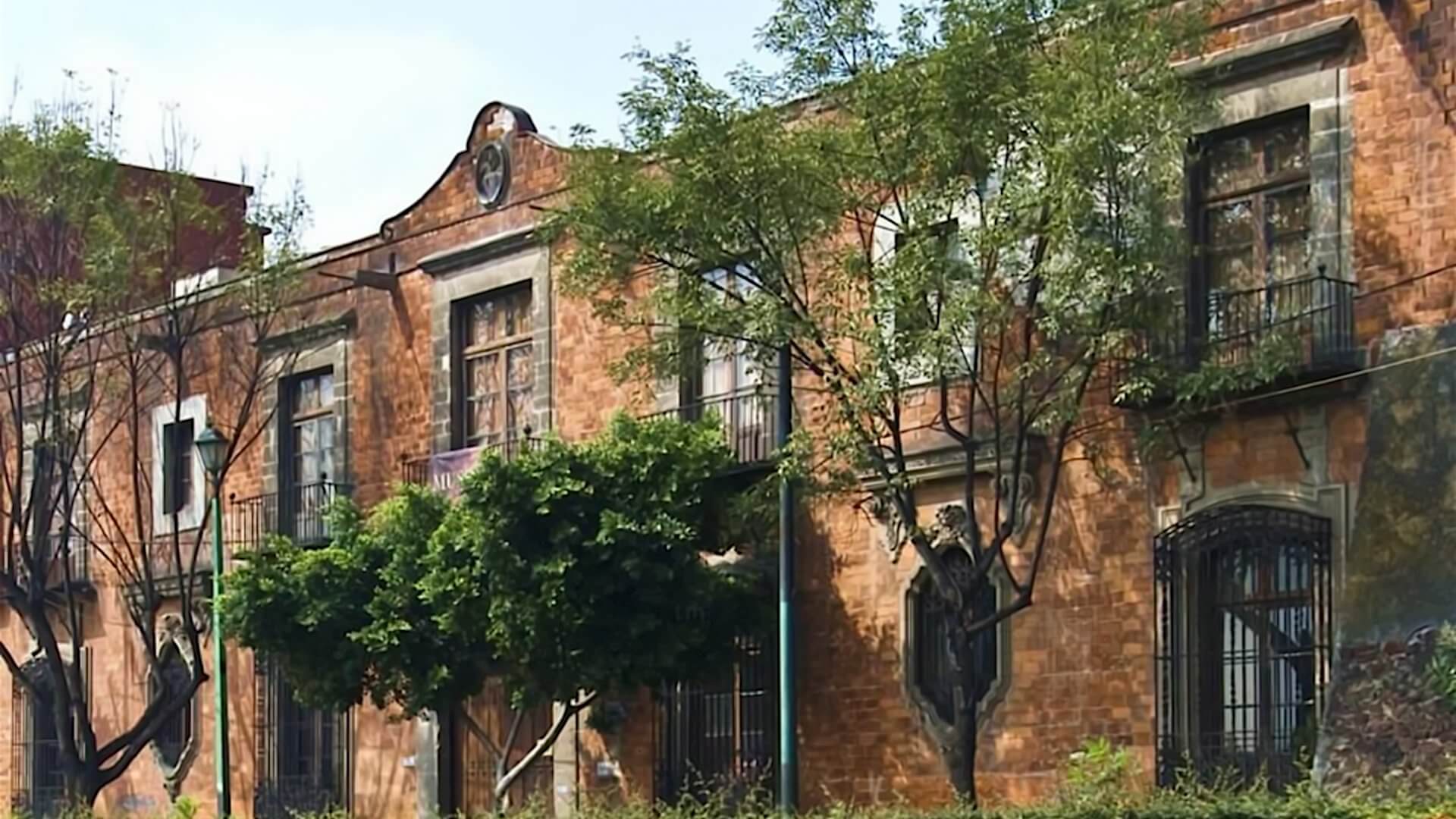

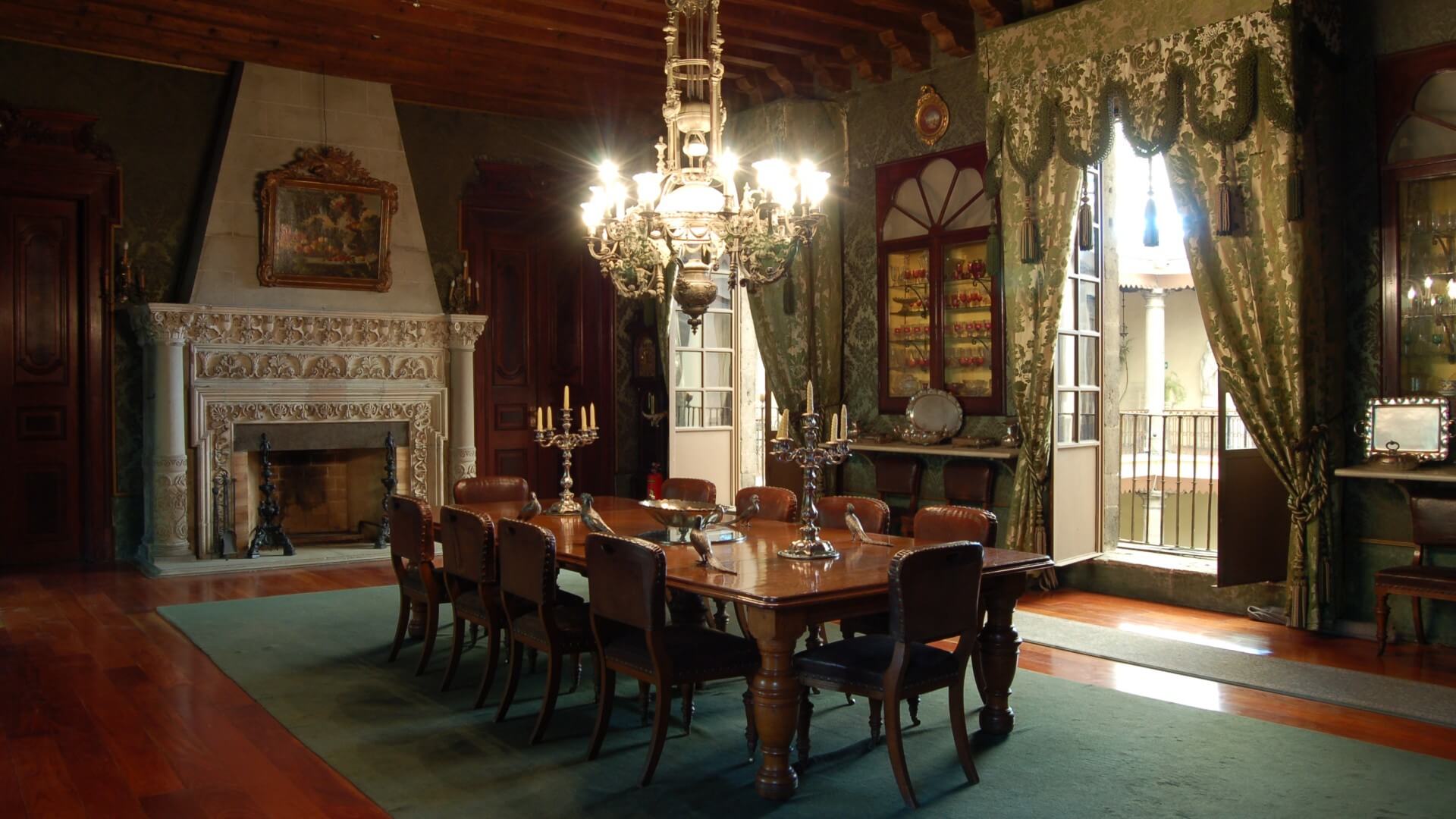
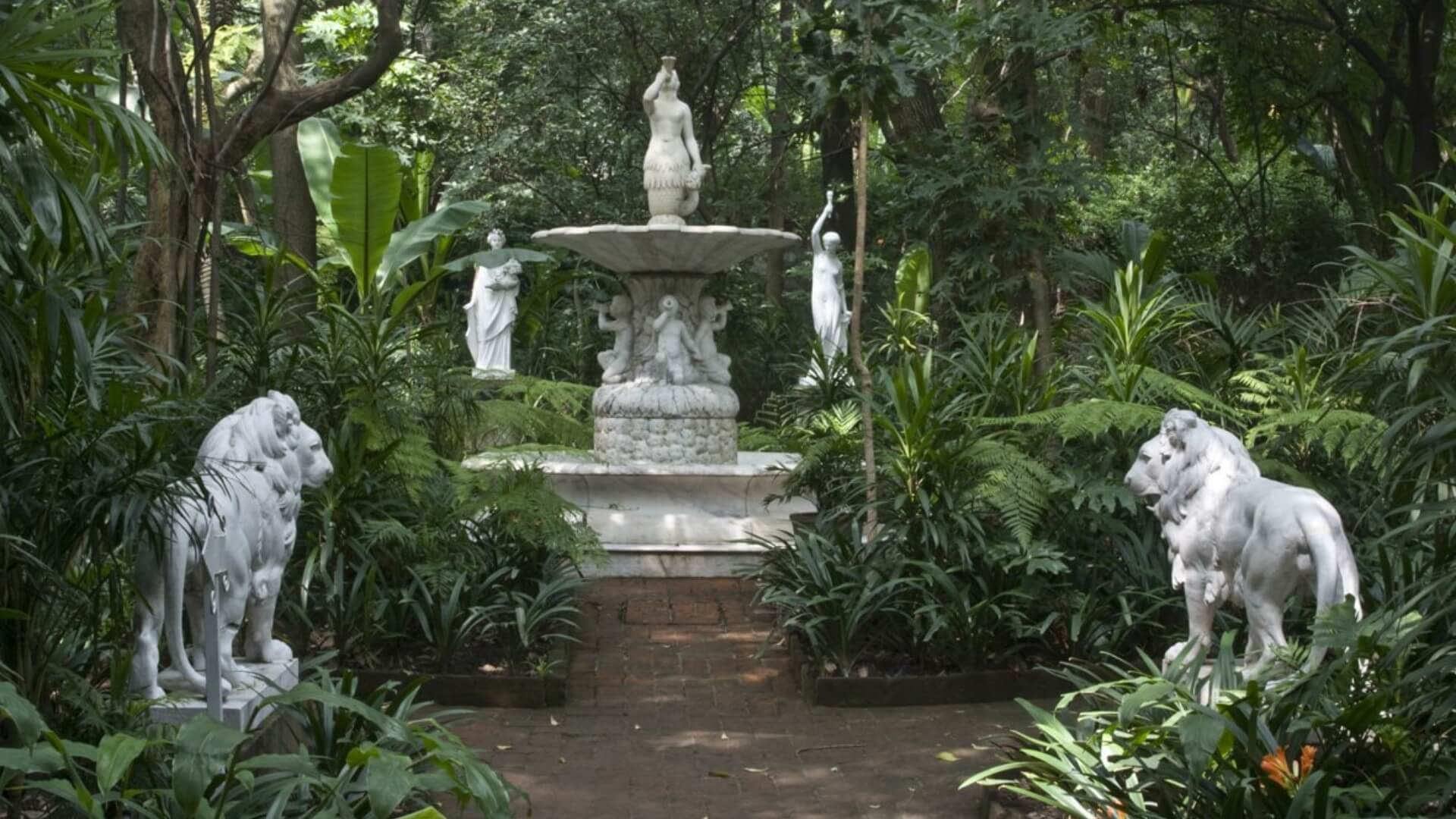

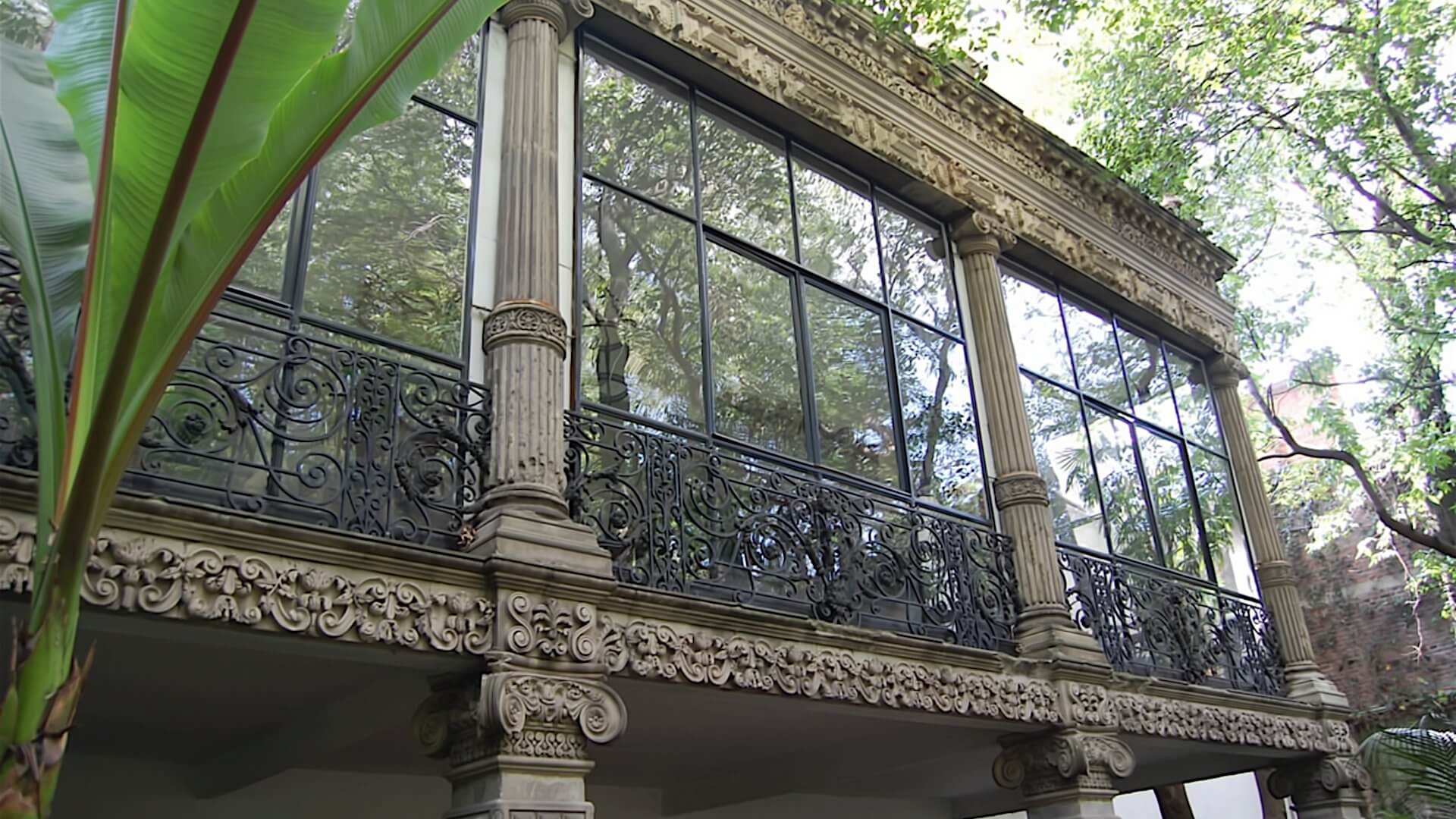
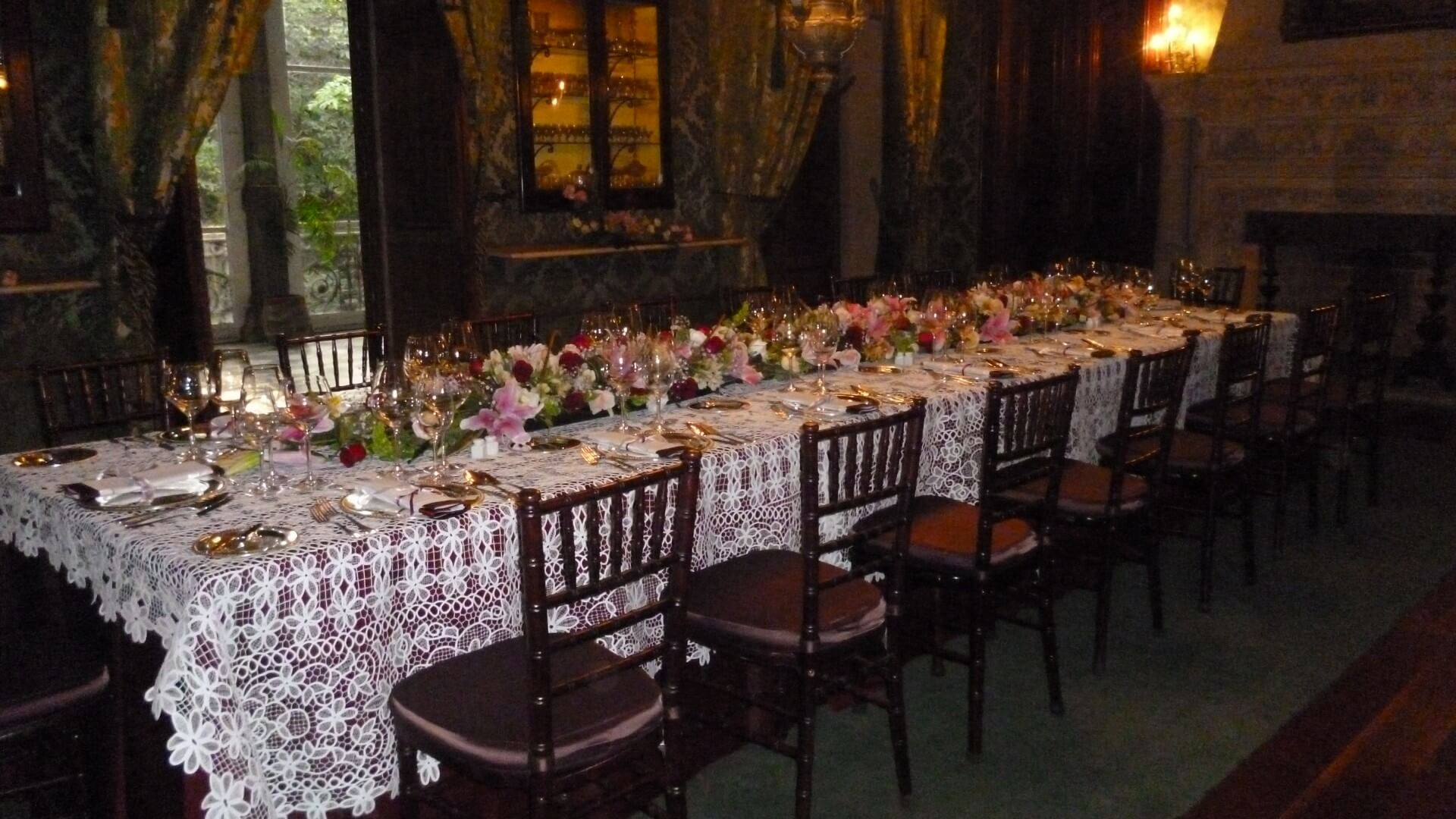
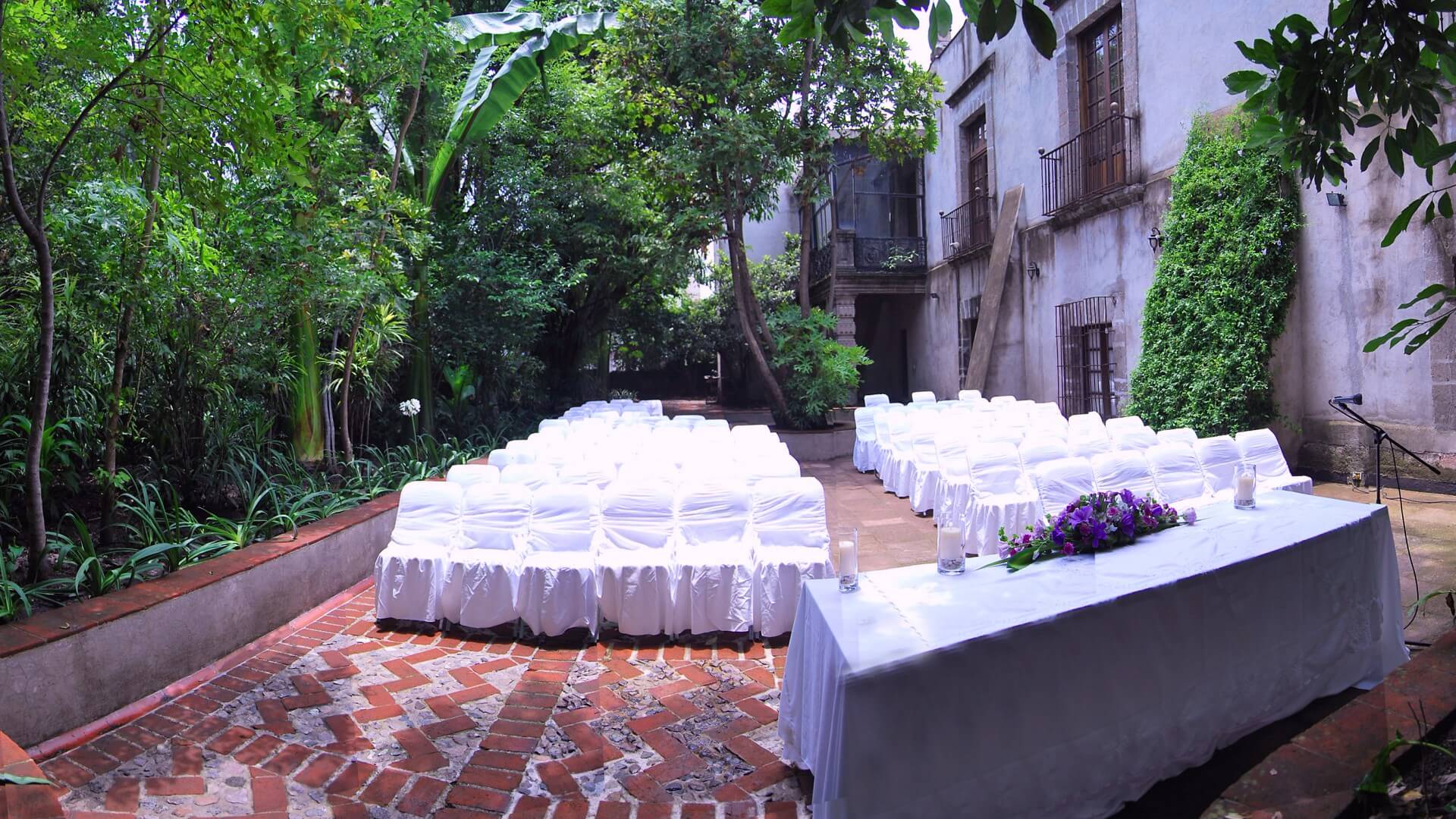

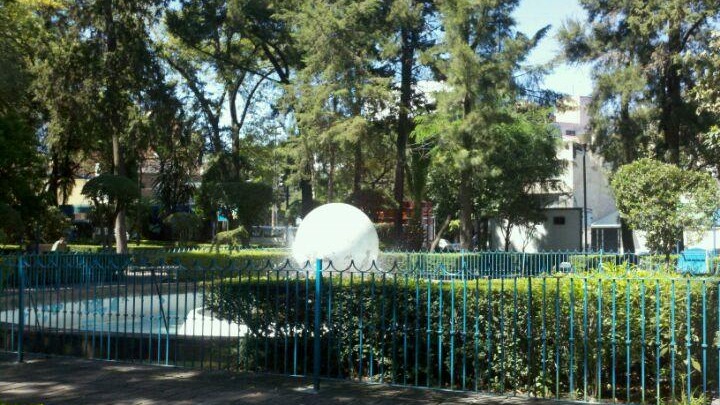
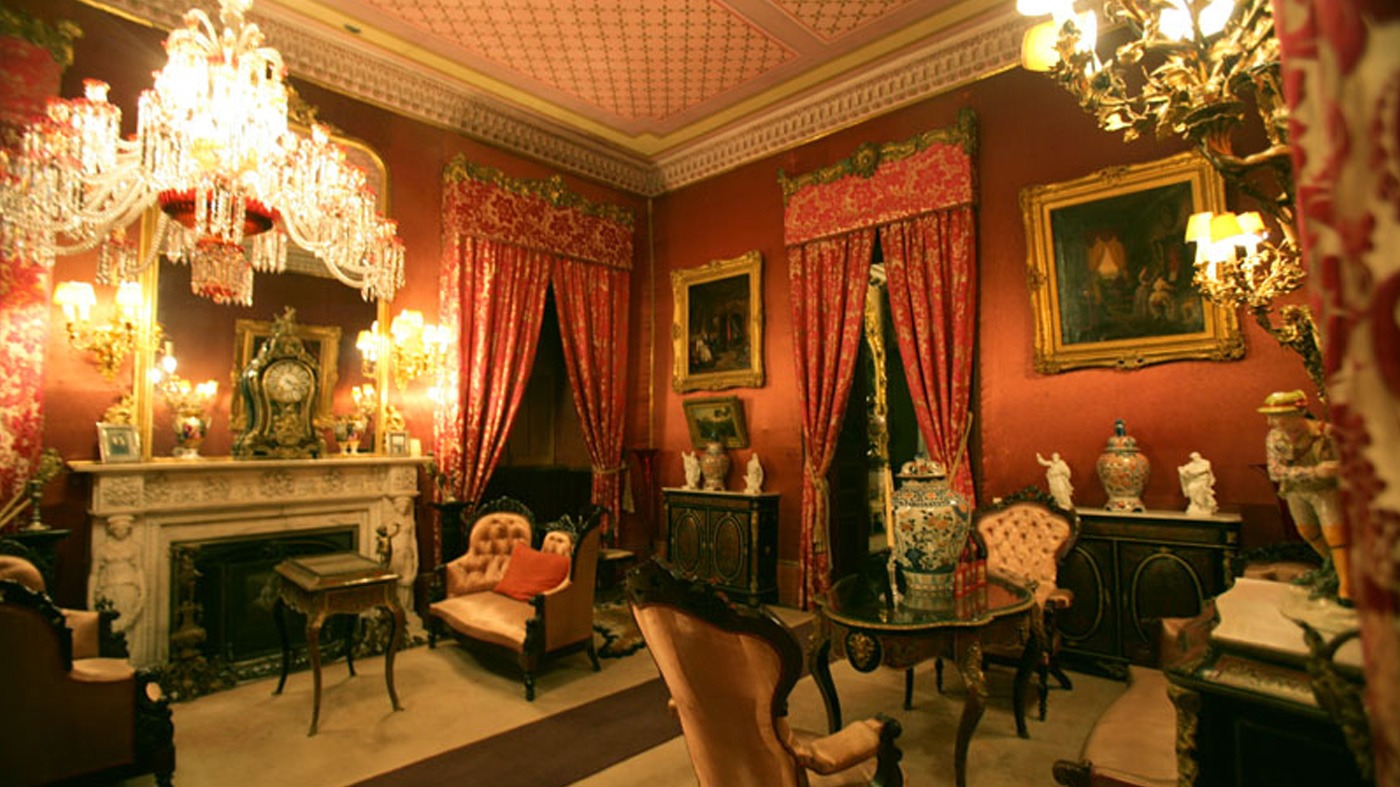
Photos courtesy of the Museo de la Bola website. Used by permission.
The Casa de la Bola Museum is a 16th century building of incredible atmosphere. In the old and rather famous neighborhood of Tacubaya, it’s also among the oldest parts of the city. The museum evokes much of what is best remembered from those by-gone eras, and a substantial collection of 17th- and 18th-century art. The grounds of the museum are today the Parque Lira which makes an excellent place to visit.
With 13 rooms primarily decorated in a 19th century style, some furniture from the 16th through the 20th centuries is included in the permanent collection.
The house’s name is believed to have derived either from a ball-shaped ornament once displayed atop the roof. Another version has it that “the ball” was actually a way of referring to one of the then-frequent strikes and social rebellions happening in the 19th century.
Built in the 16th century, the home was once part of an estate that produced olive oil. Owners included the head of the Inquisition, the Count of Cortina, and the Marquis of Guadalupe. The final owner was one Antonio Haghenbeck y de la Lama who had the building remodeled in the 1940s, and entirely decorated in the style of a 19th-century mansion. In 1984, he donated it to the cultural foundation that still bears his name and which manages this and a few other unique and irreplaceable homes in Mexico.
Among the 13 rooms in the museum today, visitors will find a number of European tapestries, porcelain, clocks, paintings, and a large collection of furniture. With two floors, a cobbled central courtyard and corridors supported by stone columns A European-style garden includes walkways, fountains, and sculptures.
The museum is easily reachable within walking distance of the Tacubaya Metro station.
 55.2614.0393
55.2614.0393
 http://www.museoshaghenbeck.mx/museo-casa-de-la-bola/
http://www.museoshaghenbeck.mx/museo-casa-de-la-bola/
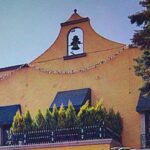
Nearest at 0.10 kms.
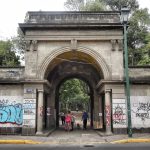
Nearest at 0.10 kms.

Nearest at 0.19 kms.
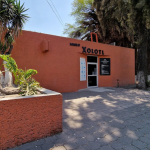
A spectacular little museum dedicated to the ancient Tenayuca ruins.

More than a wax museum, the Misterios collection is a thundering reverberation from the past . . .

A museum dedicated to the history of Mexican finance . . .
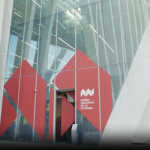
A museum dedicated to Mexico's long history of housing and living.
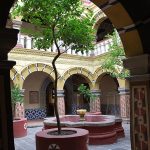
Not just the Museum of the Interventions and a fascinating military history, it's a fascinating monastery too.